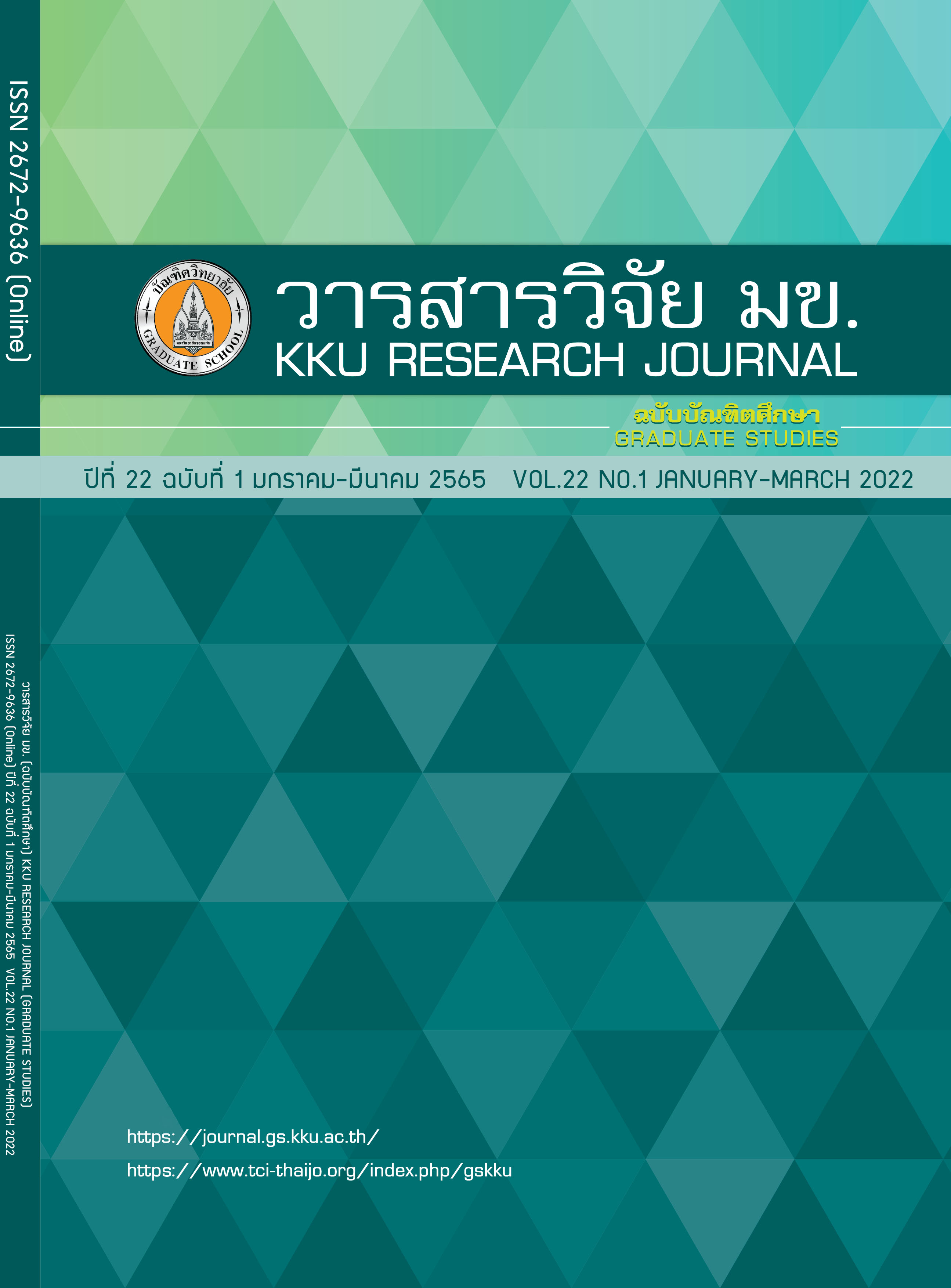Applied Surrogate Model: Energy Consumption of a Sugar Milling Machine
Keywords:
Surrogate models, Sugarcane milling machine energy consumption estimation, Consumption rate of milling machineAbstract
This article presents improvement of sugarcane milling machine energy consumption estimation. The case study is carried out at The Kumphawapi Sugar Co., Ltd. manufactory, Udornthani. This work is aimed at sufficiently accurate surrogate models, which can be used in practice for improving the rate of energy consumption for the sugarcane milling machines. Several surrogate models including radial basis function (RBF) interpolation, a Kriging (KRG) model, and a k-nearest neighborhood (KNN) method. A set of sampling points is collected from the plant operation data by using a k-mean clustering technique where input variables include, for instance, the milling machine parameter settings, and sugarcane properties. The results reveal that most of the implemented surrogate models can accurately predict the sugarcane milling machine energy consumption while the root mean square percentage errors range between 4.9808 and 12.5044.
References
OCSB (Office of The Cane and Sugar Board). Sugar production efficiency report. Bangkok; 2001.
Buathong A. The Model Development of Energy Balance for a Sugar Mill. Kon Kean University; 2014.
Wansasueb K, Pholdee N, Bureerat S. Optimum radii and heights of U-shaped baffles in a square duct heat exchanger using surrogate-assisted optimization. Eng Appl Sci Res. 2017 Apr 1;44(2):84–89.
Parzlivand F, Shahrezaee A. The use of inverse quadratic radial basis functions for the solution of an inverse heat problem. undefined. 2016;
Watts S, Arrighi W, Kudo J, Tortorelli DA, White DA. Simple, accurate surrogate models of the elastic response of three-dimensional open truss micro-architectures with applications to multiscale topology design. Struct Multidiscip Optim [Internet]. 2019 Nov 1 [cited 2020 Dec 2];60(5):1887–1920. Available from: https://doi.org/10.1007/s00158-019-02297-5
Tosteson TD, Ware JH. Designing a logistic regression study using surrogate measures for exposure and outcome. Biometrika. 1990;77(1):11–21.
Wansaseub K, Sleesongsom S, Panagant N, Pholdee N, Bureerat S. Surrogate-Assisted Reliability Optimisation of an Aircraft Wing with Static and Dynamic Aeroelastic Constraints. Int J Aeronaut Sp Sci [Internet]. 2020 [cited 2020 Jan 25];21(3):723–32. Available from: https://link.springer.com/article/10.1007/s42405-019-00246-6
Hugot E. Handbook of cane sugar engineering. 3rd rev. ed. Amsterdam: Elsevier; 1986.
Rein P. Cane sugar engineering. Cane sugar Eng. 2016;(Ed. 2).
MOOLSIRI N. DEVELOPMENT OF MASS AND ENERGY BALANCE MODEL FOR STEAM UTILIZATION PLANNING IN SUGAR PROCESSING. Khon Kaen University; 2012.
Dogbe ES, Mandegari MA, Görgens JF. Exergetic diagnosis and performance analysis of a typical sugar mill based on Aspen Plus. Energy. 2018 Feb 15;145:614–625.
Thaval OP. Modelling the flow of cane constituents through the milling process of a raw sugar factory. 2012;
Pongkanpai S, Sookkumnerd C, Priprem S. Study of the effect of determining the conditions of raw sugar production on steam utilization rate. King Mongkut’s University of Technology North Bangkok; 2009.
Li Y, Wu H. A Clustering Method Based on K-Means Algorithm. Phys Procedia. 2012 Jan 1;25:1104–1109.
Forrester AIJ, Sóbester A, Keane AJ. Engineering Design via Surrogate Modelling. Wiley; 2008.
Panagant N, Bureerat S. Truss topology, shape and sizing optimization by fully stressed design based on hybrid grey wolf optimization and adaptive differential evolution. Eng Optim. 2018 Oct 3;50(10):1645–1661.
Gan G, Valdez EA. Ordinary Kriging. Metamodeling Var Annu. 2019;69–94.
Ghosh J, Nag A. An Overview of Radial Basis Function Networks. In Physica, Heidelberg; 2001 [cited 2020 Dec 2]. p. 1–36. Available from: https://link.springer.com/chapter/10.1007/978-3-7908-1826-0_1
Wu Y, Wang H, Zhang B, Du K-L. Using Radial Basis Function Networks for Function Approximation and Classification. ISRN Appl Math. 2012;2012:1–34.
Schaback R. Radial Basis Functions Viewed From Cubic Splines. In: Multivariate Approximation and Splines [Internet]. Birkhäuser Basel; 1997 [cited 2020 Dec 2]. p. 245–258. Available from: https://link.springer.com/chapter/10.1007/978-3-0348-8871-4_20
Javaran SH, Khaji N. Inverse Multiquadric (IMQ) function as radial basis function for plane dynamic analysis using dual reciprocity boundary element method. 2012;
Sarra SA. Integrated multiquadric radial basis function approximation methods. Comput Math with Appl. 2006 Apr 1;51(8 SPEC. ISS.):1283–1296.
Zhang Z. Introduction to machine learning: K-nearest neighbors. Ann Transl Med [Internet]. 2016 Jun 1 [cited 2020 Dec 2];4(11). Available from: /pmc/articles/PMC4916348/?report=abstract
Downloads
Published
Issue
Section
License
Copyright (c) 2022 KKU Research Journal (Graduate Studies)

This work is licensed under a Creative Commons Attribution-NonCommercial-NoDerivatives 4.0 International License.



